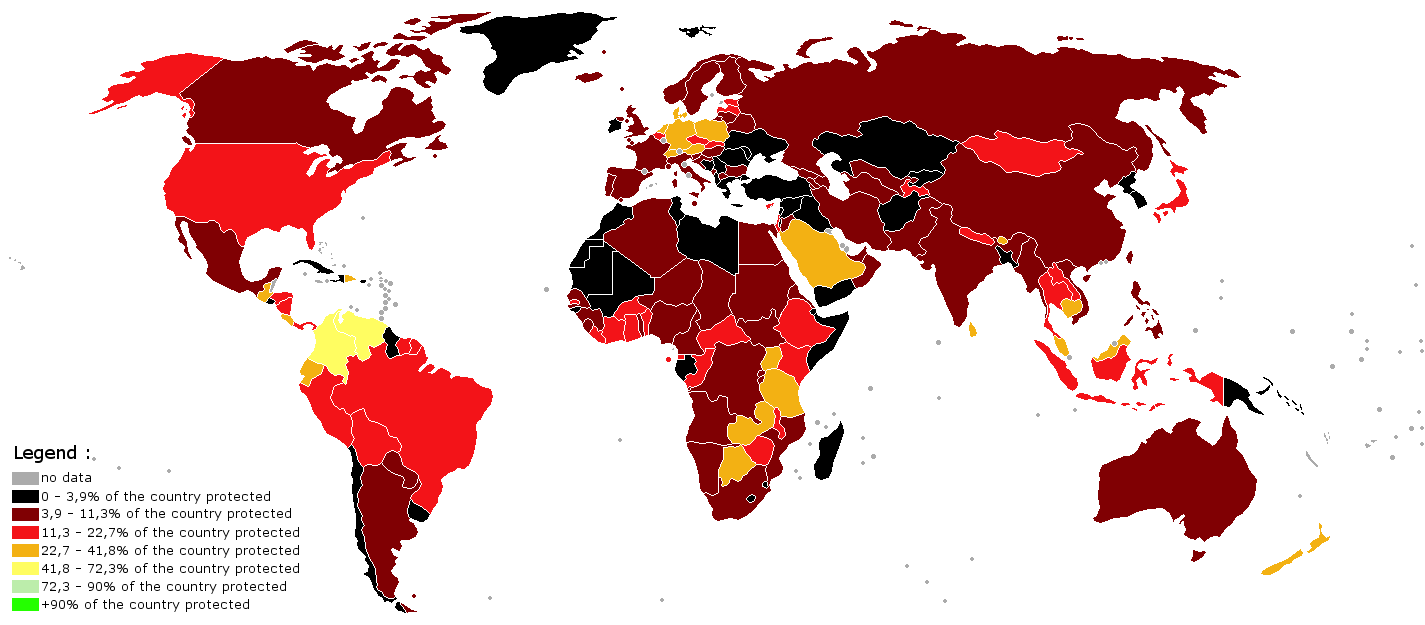By Chris Mooney, The Washington Post, February 24, 2015
 |
| Lighter areas have more protected areas |
We haven’t paved the planet — yet.
From the Grand Canyon to Grand Teton, the world is full of so-called “protected areas”: National parks, lands, wildlife preserves, and other wild places that people can visit and enjoy, but that are managed so that they remain untrammeled and intact. They comprise, overall, 12.7 percent of the Earth’s land surface.
We all know these places exist, and we sometimes visit them. But according to a new paper in PLOS Biology, “sometimes” might not really be the right word. If the study — by University of Cambridge biologist Andrew Balmford and a group of colleagues from academia and conservation organizations — is correct, then humans across planet Earth literally throng to these places.
The paper finds that people are paying global protected areas an estimated 8 billion visits a year, a “strikingly large” number (in the study’s words) that exceeds the total global population.
Some of the biggest draws, according to the researchers, include South Korea’s Seoraksan National Park (more than three million visits a year), the UK’s Lake District (over 10 million) and the Golden Gate National Recreation Area (over 13 million annually).
Even so, the new study finds, not everybody visits these places — it tends to be relatively wealthy North Americans and Europeans who do so. These continents account for four fifths of protected area visits — an estimated 3.8 billion occurring in Europe, and 3.3 billion in North America.
Moreover, our spending to preserve these wild and pristine places doesn’t remotely rival their value, in light of the 8 billion figure above. The study estimates that the 8 billion visits are worth $ 600 billion dollars in direct tourist expenditures, and an additional $ 250 billion in “consumer surplus” (money that people would be willing to spend if they had to on these visits).
“These figures dwarf current, typically inadequate spending on conserving [protected areas],” note the authors, who say that the world currently spends less than $ 10 billion in keeping protected areas…protected.
The study only examined visits to terrestrial protected areas — vast swaths of the ocean and of Antarctica are also protected, if far more rarely visited. The 8 billion estimate comes from analyzing attendance at 556 protected areas in 51 countries, and then using models to extrapolate those numbers to a much larger group of 94,238 sites on Earth that count as protected areas (still excluding Antarctica, the oceans, and some very small sites or sites that don’t welcome tourists).
The authors acknowledge that there is much uncertainty in the figure, but add that “we consider it implausible that there are fewer than 5 billion [protected area] visits worldwide each year.”
The upshot? Spend more on nature, and you can expect to get a great payback. “Substantially increased investments in protected area maintenance and expansion would yield substantial return,” the study concludes.
No comments:
Post a Comment